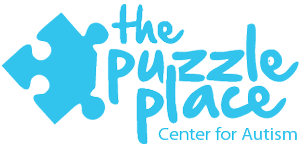On September 27, 2007 After 16 hours of labor and a c-section, I gave birth to a 9lb 10 oz baby girl. Due to the c-section I was asleep when Gracie was born. I met my daughter for the first time about 2 hours after her birth. I recall the experience as if it was yesterday.
Laying in the recovery room, I finally opened my eyes. My head must have been facing her because I didn’t have to turn around and look for my daughter. My eyes opened and our eyes locked immediately. This baby was quietly looking at me as if she waiting for me to wake up. I said, “Hi, I’m your Mommy!”
So pretty much from then till about say 2 and a half pretty much everything seemed pretty normal to me. I was a first time mom and didn’t know any better, but everything seemed to be going fine. I didn’t know this wasn’t typical but Gracie only spoke few words. She was lining up her toys in a perfect line and stacking blocks in a line and heaven forbid you knock anything out of order. She would have a fit. My thinking was “oh she is just like her mommy”. She likes things organized and in place. Now, I know it was her being rigid and having a tantrum.
She was lining up her toys in a perfect line and stacking blocks in a line and heaven forbid you knock anything out of order.

From the Desk of Ricky Teichman, BCBA
Know the Signs
So many parents tell me that they knew, they just knew, that their child had Autism. Each one had something else that tipped her off. One mom told me that by the time her son was 13 months old, she was sure he had Autism. When she mentioned it to her sister, a teacher, she thought the mom was nuts! Some tell me it’s the eye contact, some children fail to respond to their name, there was a child who was reading before he could use a single word in conversation! The younger the diagnosis, the earlier the treatment and the better the outcome is in the long run. It is imperative that all moms, daycare providers, doctors and others that care for young children and babies know the signs, the “red flags” of Autism.
Here is a quick checklist:
- Does your child make eye contact (e.g. look at you when being fed etc.)?
- Does you child smile when smiled at?
- Does your child respond to his or her name or to the sound of a familiar voice?
- Does your child follow objects visually (track items)?
- Does your child point or wave good-bye or use other gestures to communicate?
- Does your child follow the gesture when you point things out?
- Does your child make noises to get your attention?
- Does your child initiate or respond to cuddling?
- Does your child imitate your movements and facial expressions?
- Does your child play with other people or share interest and enjoyment?
- Does your child ask for help or make other basic requests?
Then there are those who are hyper-vigilant (myself included! How many other mothers are testing their child’s tracking abilities at 2 weeks? lol). If your child doesn’t turn around when you call his or her name, that doesn’t a diagnosis make. There are many other pieces that go into the actual diagnosis, and no teacher, friends or relative (or even unqualified professional) should be throwing the “Autism” word at you. It is not their place to diagnose, though they can kindly make you aware of the issues they are seeing.
If your child doesn’t turn around when you call his or her name, that doesn’t a diagnosis make.
I remember the first Early Intervention client I had. I had previously worked as a special education teacher, and this was the first little boy I would be seeing in home. I eagerly (Ok, I was a little nervous:)) rang the bell and was greeted by a little guy exclaiming “wheels, wheels!” I was in love! But as I got to know Dylan, I saw that he was exhibiting all the “red flags” of Autism. He spun wheels in a corner all day. He did not respond to his name. The only word he ever uttered was “wheels.” He did not play with toys. The only time I saw him smile was when he was busy with his wheels. I knew I had to say something, but it was not my place! I had my supervisor come and observe, and when she mentioned the Big Bad Word “developmental pediatrician,” mom shut down. “He doesn’t have Autism, right?” My supervisor tried to give it over in a non-alarming manner, but mom would have none of it. Services were terminated the very next day. I met mom at Toys R Us a couple of months later. She stopped me to tell me that Dylan was speaking and doing “so much better.” I wished him the best of luck and pray that he received the help he needed.
Autism is hard. It can sometimes be very hard. But knowing the signs and acknowledging that something is wrong is a very important first step that we can take to help out children.
For more on the Early signs of Autism: https://thepuzzleplace.org/forms-resources/

